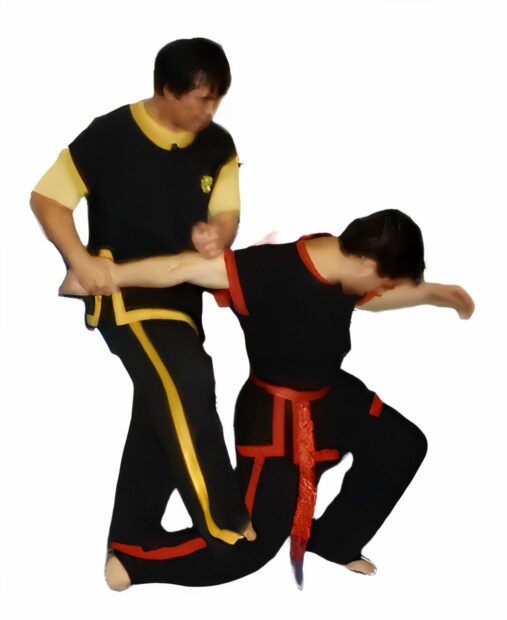Mastering Wing Chun Kung Fu: How to Perfect Your Techniques and Embody the Art’s Principles
By Maurice Novoa a master under the Yuen Kay Shan, Ip Man and Pan Nam lineages.
Introduction
Wing Chun Kung Fu is a martial art renowned for its practicality, efficiency, and effectiveness. In this article, we delve into the path of mastering Wing Chun and explore how practitioners can perfect their techniques while embodying the art’s core principles. By understanding the foundations of the style and committing to disciplined practice, individuals can reach a higher level of mastery and fully embody the essence of this remarkable martial art.
Understanding the Core Principles of Wing Chun
Simplicity: Streamlining Techniques for Practical Application
At the heart of Wing Chun lies the principle of simplicity. The art focuses on direct, economical movements, eliminating unnecessary actions to maximize efficiency. Practitioners learn to streamline their techniques, stripping away elaborate flourishes and relying on the most effective methods. By mastering simplicity, practitioners can react swiftly and decisively in real combat situations.
Centerline Theory: Dominating the Advantageous Position
The centerline theory is a fundamental principle in Wing Chun. It teaches practitioners to recognize and control the centerline—the imaginary line running down the middle of an opponent’s body. By maintaining control of this vital space, practitioners can dominate their opponents and effectively counter their attacks. Mastering the centerline theory involves precise footwork, accurate positioning, and constant awareness of the opponent’s movements.
Economy of Motion: Efficiency in Every Technique
Wing Chun emphasizes the concept of economy of motion, ensuring that every movement serves a purpose. Unnecessary motions waste energy and create openings for opponents to exploit. By refining their techniques and eliminating superfluous actions, practitioners can maximize the efficiency and effectiveness of their strikes, blocks, and footwork. Economy of motion enables practitioners to generate power and deliver lightning-fast responses with minimal effort.
Body Structure and Alignment: Harnessing Internal Power
In Wing Chun, correct body structure and alignment are crucial for generating power and maintaining stability. By understanding and applying the principles of proper posture, balance, and alignment, practitioners can harness their internal power and generate explosive force. The alignment of the spine, the rooting of the feet, and the coordination of the entire body contribute to the effectiveness of the techniques.
Developing Sensitivity and Flow: The Art of Chi Sau
Chi Sau, or sticky hands, is a training method unique to Wing Chun. It cultivates sensitivity, reflexes, and the ability to flow with an opponent’s movements. Through the practice of Chi Sau, practitioners develop a heightened sense of touch and learn to react spontaneously to changes in pressure and direction. This training enhances their ability to maintain contact, redirect energy, and launch effective counter-attacks.
Mental Discipline and Focus: Cultivating a Warrior’s Mindset
Mastering Wing Chun goes beyond physical techniques—it requires mental discipline and focus. The art teaches practitioners to remain calm and composed in the face of adversity, enabling them to make clear and decisive decisions under pressure. Through dedicated practice and meditation, practitioners develop mental fortitude, sharpen their focus, and cultivate a warrior’s mindset.
Embodying the Principles of Wing Chun in Daily Life
The principles of Wing Chun extend beyond the training hall—they can be applied to everyday life. By embodying the essence of the style, practitioners can cultivate discipline, resilience, and a balanced approach to challenges.
Confucianism and Wing Chun: Ethics and Moral Conduct
Confucianism’s influence on Wing Chun emphasizes ethics and moral conduct. The art promotes virtues such as loyalty, righteousness, and respect. By applying these values in daily life, practitioners foster integrity, honor, and harmonious relationships with others.
Buddhist Philosophy and Wing Chun: Mindfulness and Non-Attachment
Buddhist philosophy aligns with Wing Chun’s emphasis on mindfulness and non-attachment. Practitioners can apply mindfulness to daily actions, cultivating awareness and focus. Non-attachment allows individuals to let go of ego and adapt to change, fostering personal growth and resilience.
Conclusion
Mastering Wing Chun Kung Fu requires dedication, discipline, and a deep understanding of its core principles. By perfecting techniques, embodying the principles of simplicity, centerline theory, economy of motion, body structure, and alignment, practitioners can reach a higher level of proficiency. Additionally, developing sensitivity and flow through Chi Sau, cultivating mental discipline and focus, and applying the art’s wisdom to daily life contribute to the journey of mastery.
Through the integration of Confucianism’s emphasis on ethics and moral conduct and Buddhist philosophy’s mindfulness and non-attachment, practitioners can elevate their practice and embody the essence of Wing Chun in their interactions, personal growth, and pursuit of excellence.

